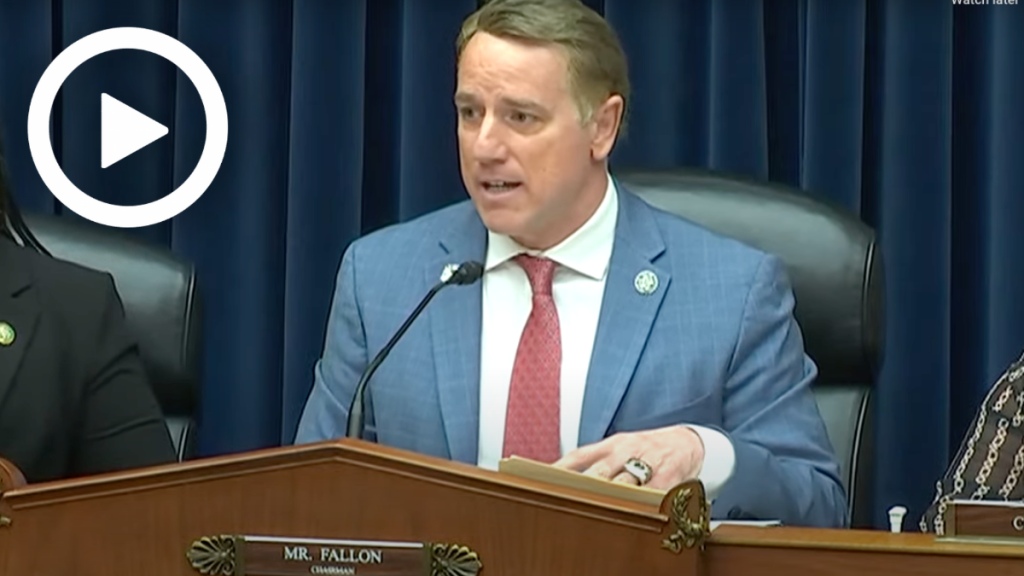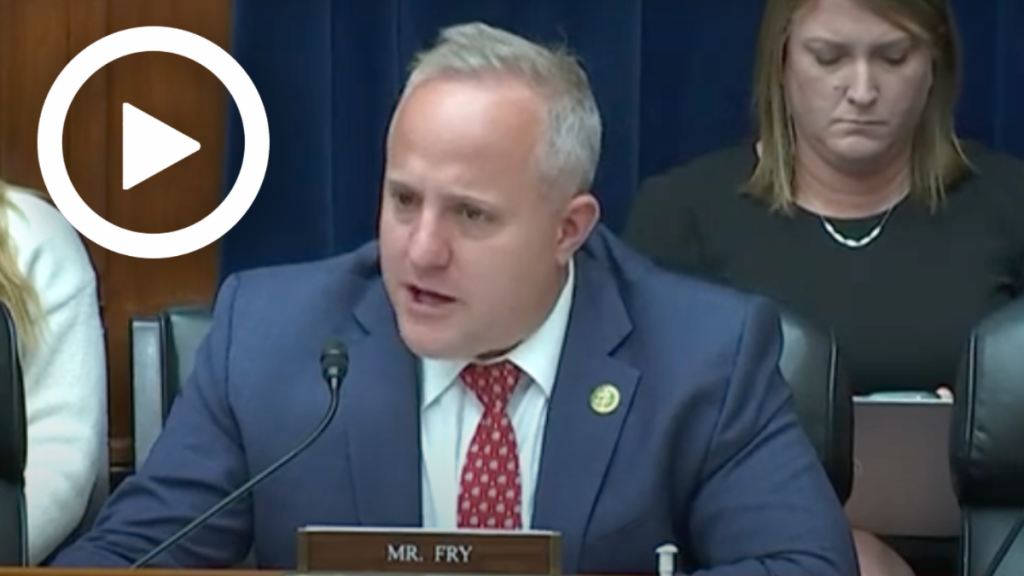Hearing Wrap Up: Work-Based College Alternatives Can Help Employers Fill Jobs and Students Accomplish the American Dream
WASHINGTON—The Subcommittee on Economic Growth, Energy Policy, and Regulatory Affairs held a hearing yesterday titled “The Power of Apprenticeships: Faster, Better Paths to Prosperous Jobs and Less Waste in Higher Education” to discuss challenges surrounding the rising cost of higher education and examine the importance of apprenticeships and career technical programs as cost-effective solutions to prepare students for the workforce.
Key Takeaways:
Apprenticeships offer unique, innovative, and lower-cost alternatives to traditional four-year degree programs and often result in better employment outcomes with greater returns on investment.
- During his opening statement, Tony Ewing, President of Advanced Fixtures, Inc., described his own experience with forgoing college to begin his career with the help of mentorship as the “American dream.” “Four-year college is clearly not for everyone. I don’t have a degree,” Ewing said. “Yet for all the reasons I listed, I’ve had the honor to lead a successful and growing company for over forty years, influence hundreds of employees, and contribute to their livelihoods.”
- Dr. Casey Sacks, President of BridgeValley Community and Technical College, discussed strategies that can help America have a more prepared workforce, including community colleges aligning educational programs closely with local demands, innovative work-based learning programs to integrate academic learning with real-world experience, and charter schools that integrate high school students with community colleges.
As students and families struggle under Bidenomics, cost-effective decisions made around education and future employment opportunities are more important than ever.
- “College for all is not working for all. There is a $1.77 trillion student loan crisis in this country, and that has tripled since 2008. Fifty-two percent of college graduates graduate with debt – the average amount is $29,000,” Erin Valdez, Policy Director for Next Generation Texas with the Texas Public Policy Foundation said during her opening statement.
- Rather than solve the root causes of sky-high student loan debt and address needed reform in higher education, the Biden Administration’s solution to “cancel” billions in federal funded student loan debt would continue to incentivize students to pursue programs that don’t fit employers’ needs.
Lack of skills-based training that accurately reflects the needs of employers across the country has left them with job openings they are unable to fill.
- According to the August 2023 Job Openings and Labor Turnover Survey (JOLTS), there are currently over three million more job openings than unemployed people in the United States.
- Mr. Ewing provided an example of employers’ high demand for recruiting technically skilled graduates. “From 2011-2023 [Pittsburgh State University] had from 8 to 17 graduating seniors in their wood tech program. On average, that’s 14 graduating seniors per year. Their spring company day event attracts from 22 to 31 companies. That’s 25 companies on average trying to attract 14 graduates.”
- “We propose that apprenticeships can bring people back into the labor market by providing a path from vocational education high school to a job upon graduation,” Dr. Paul Winfree, President and CEO of the Economic Policy Center, said during his opening statement. “Furthermore, industry-led apprenticeships create an incentive for businesses to invest skills for their workers that increase productivity for the firm, while simultaneously increasing competitiveness of the worker. This translates into higher wages, as we all know.”
Member Highlights:
Subcommittee Chairman Pat Fallon (R-Texas.) asked about the challenges employers are facing when recruiting qualified applicants for open positions.
Rep. Fallon: “What challenges do you think you’re experiencing now attracting high school kids to your business? Do you, with a company of about 150 people, do you have all the labor that you need?”
Mr. Ewing: “No. Office talent, sales, project managers, accounting – we have no challenges there. Our challenge is in production.”
Rep. Fallon discussed how programs connect with employers to identify community needs and assist in developing skills-based training that prepares students for success in the workforce.
Rep. Fallon: “Can you explain how you identify needs in the community and tailor programs that are offered that meet those needs?”
Dr. Sacks: “A lot of this is employer driven. We [Should this be “talk”?:]talked to our employers regularly. All of our programs have employers that are very involved. Many of our employers provide employees who are teaching as [Should this be “adjuncts”?:]adjunct in our programs.”
Rep. Fallon also noted that other countries, such as Germany, have demonstrated success with integrating work-based educational paths in high school.
Rep. Fallon: “What does Germany do differently?”
Dr. Winfree: “One of the things that other countries do is they integrate their vocational education in their normal academic tracks. So, you aren’t separating students coming out of middle school. You’re putting them all in the same school. They don’t have to choose to go to a school without their friends, they can be right there.”
Rep. Russell Fry (R-S.C.) discussed how federal funding structures are skewed towards traditional college and higher education, despite only 35 percent of jobs requiring a bachelor’s degree, according to research done by the American Enterprise Institute in April 2022.
Rep. Fry: “Dr. Sacks, you were just talking about the aspiring nursing program. What are the funding mechanisms available for students that participate in that program?”
Dr. Sacks: “Students who participate in any program at the community college have the opportunity to take advantage of federal programs that exist, so that includes the Federal Pell Grant, federal loans, then we have a number of grants that are available within the state of West Virginia. [….] Students also have a lot of private support that comes in, so the aspiring nurse program means that the big hospital system in the state, for example, is stepping in and paying students to be students.”
Rep. Fry: “In what ways could states remodel their funding structures to better accommodate these pre-apprenticeships or stackable apprenticeships?”
Dr. Sacks: “I mean, it really starts with what their employers want. It should be the foundation of their state WIOA plan. Unfortunately, many of those state plans are grounded in federal compliance, instead of really thinking about how to meet local labor market demands.”
CLICK HERE to watch the full hearing.

